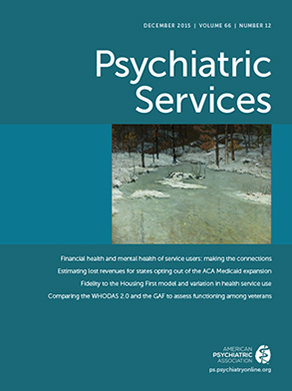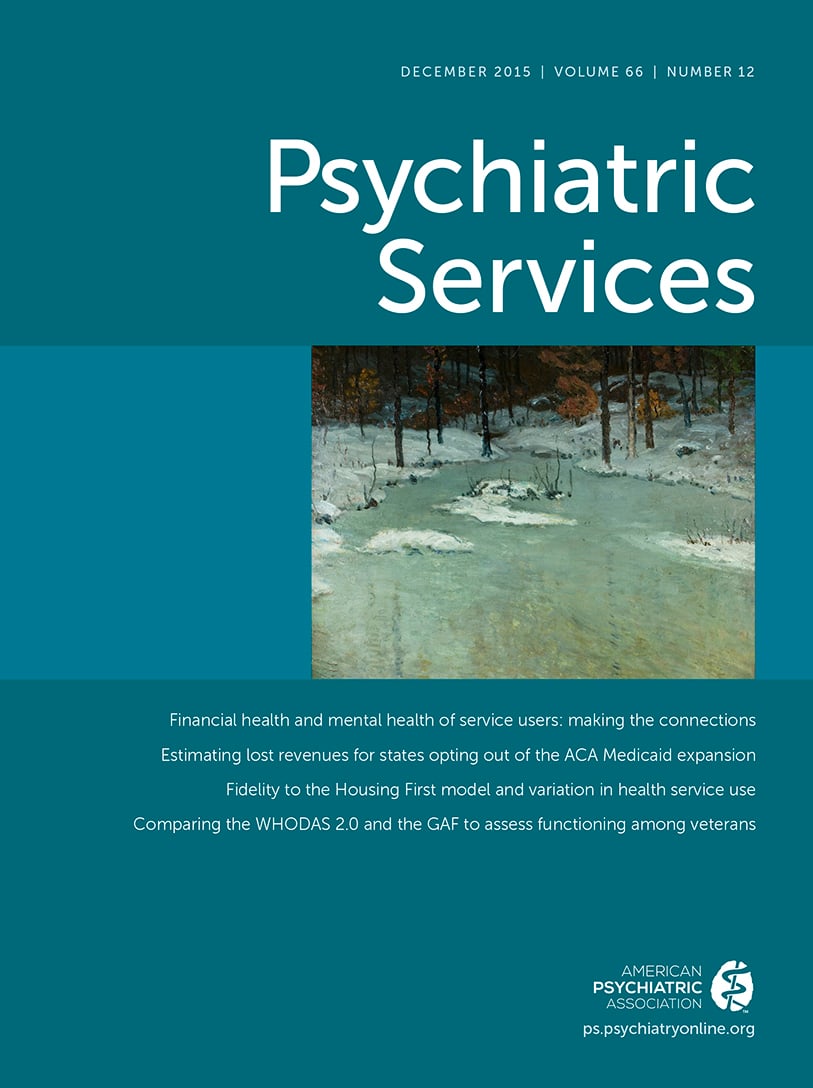Stigma has an impact on the lives of people with mental illness in at least two ways: label avoidance, which occurs when people do not seek mental health services in order to avoid stigmatizing labels, and public stigma, which leads to prejudice and discrimination that undermine the pursuit of life goals related to work, independent living, and personal relationships. Targeting stigma to erase these different impacts leads to separate approaches: the services agenda, which aims to remove stigma as a barrier to becoming engaged in evidence-based services, and the rights agenda, which replaces discrimination that robs people of rightful opportunities with affirming attitudes and behaviors. This Open Forum briefly reviews each agenda and describes differences between them.
The Services Agenda: Erasing Stigma to Promote Care Seeking
Although research has identified several evidence-based practices for people with serious mental illness, many individuals opt not to seek these services in time of need or drop out of them prematurely (
1,
2). The stigma of mental illness is one of many reasons that seem to account for the disparity between need and service receipt (
3). People avoid interacting with providers and places where users are associated with stigmatizing labels. (“That person coming out of the psychiatrist’s office must be nuts.”)
One way to decrease stigma’s harm is by promoting mental health literacy through health communication campaigns. Mental health literacy is knowledge about mental illness, which aids in its recognition, management, and prevention (
4). Individuals who better recognize their mental illness and corresponding treatment options might be more willing to use those options. An Australian program, called beyondblue, is especially relevant to the issues of label avoidance and care seeking. Beyondblue is a social marketing campaign that includes public service announcements framing depression as a treatable disease. It has been active in Australia for almost 15 years and has been shown to have penetrated the population well—60% of Australians are aware of the program (
5). Campaign awareness was found to be associated with better recognition of mental illnesses and greater understanding of treatment benefits (
6).
Mental health first aid (MHFA), another mental health literacy program, originated in Australia and has expanded greatly in the United States and Canada during the past few years. MHFA is an eight-hour course taught in classroom settings that reviews basic information and skills so that course participants can help others with mental health problems or crises. MHFA has been completed by more than 1% of Australians (
7) and was the centerpiece of U.S. legislation meant to address gun violence related to mental illness (HR 5996). Findings from an MHFA meta-analysis showed that people who completed training were likely to have mastered information about mental illness and had fewer stigmatizing attitudes and beliefs (
8). This kind of information is expected to boost care seeking.
The Rights Agenda: Replacing Discrimination With Affirming Attitudes and Behaviors
In public stigma, the population endorses stereotypes of mental illness leading them to discriminate against people with the label. Research shows that people with mental illness have fewer opportunities related to work, independent living, and primary health care because of public stigma (
9). The U.N. Convention on the Rights of Persons With Disabilities echoes concerns of public stigma. It asserts the full rights of people with all disabilities to life opportunities as citizens and workers and includes provisions addressing reasonable accommodations to help people enjoy those opportunities. Erasing discrimination is not enough; the population needs to replace prejudice with affirming attitudes and behaviors. Affirming attitudes promote a person’s recovery and pursuit of individual goals on the basis of hope and self-determination. Affirming behaviors are community actions that reinforce recovery and self-determination. They include innovative ways to provide reasonable accommodations and meaningful supports.
Programs directed toward public stigma and affirming attitudes have largely been grouped into education (contrasting myths about mental illness with facts) and contact (decreasing stigma by promoting interactions between the public and people in recovery). Results of a meta-analysis suggest that contact has a significantly greater effect on stigmatizing attitudes and behavioral intentions (
10). Opening Minds is a nationwide effort in Canada that largely rests on contact-based interventions (
11). Opening Minds sought to build networks of practice—collections of small, contact-based programs from across the country that were reimbursed for locally based antistigma efforts. Preliminary analyses appear to suggest that contact programs have positive effects on targeted groups of youths, health care providers, Canadians in the workplace, and the media.
The Significance of Different Goals
Because stigma is such an obvious injustice, many may mistakenly believe that all well-intentioned efforts will erase stigma. This idea is being replaced with critical appraisals suggesting that not every approach to stigma change is equally effective and that some strategies may actually make things worse (
12). Distinguishing between services and rights agendas is a useful approach for critical analyses; the two agendas differ in fundamental purposes, processes, and messages. The services message seeks to destigmatize mental illnesses by framing them as treatable disorders. The rights message places stigmatization of mental illness in the same light as any civil rights violation, calling for an end to discrimination. These messages lead to differences in expected benefits that, thereby, define how research measures their success. The services agenda is successful when evidence shows that people with mental illness are seeking services more or becoming better engaged in services. The rights agenda is successful when, for example, there are more people with mental illness in the workforce receiving reasonable accommodations.
The different agendas may be driven by people with different roles in the mental health system. The services agenda is propelled by people who are confident that treatment helps: those who have benefited from interventions and their families. This approach is often supported by service providers and their professional organizations. The rights agenda is driven by those who have been victimized by discrimination, either directly or through the experiences of others. Agendas may employ different strategies to promote their goals. The services approach is dominated by health communication and public service campaigns meant to influence a broad population. The rights approach is more grassroots, using people with lived experiences and stories of recovery to challenge local examples of discrimination and promote community opportunity.
Future research needs to determine whether and how these goals complement each other. Consider one way in which the two might intersect: decreasing label avoidance to promote care seeking has a broad impact on discrimination, which in turn has an impact on the rights agenda. Although that expectation appears to be reasonable, research does not seem to support it. Results of a randomized controlled trial comparing a public service announcement from beyondblue with a videotaped story of recovery showed that the recovery story led to significant reductions in stigma and improvement in empowerment, whereas no such changes were found for the beyondblue service announcement (
13). Consider two other examples. Are there unintended consequences to literacy programs such as MHFA? Because MHFA focuses on the symptoms and disabilities of various diagnoses, might it exacerbate labels and corresponding stigma? Similarly, might greater engagement in psychiatric services expose a person to greater labels, thus exacerbating self-stigma?
This Open Forum focuses on only two of several kinds of stigma, omitting, for example, self-stigma (internalization of stereotypes that hurts one’s self-esteem and sense of self-efficacy) and structural stigma (institutional formulations of prejudice, such as the lack of mental health insurance parity). Continued research needs to examine the agenda of antistigma efforts vis-à-vis self- and structural stigma. Given that stigma is largely a social construction, continued discussion should also examine the interaction of the stigma experience with cultural attitudes and beliefs. Research suggests that inclusion of stigma change in the services agenda should address ways in which mental health services have been improved to rectify health disparities (
14). The rights agenda should reflect the added burden of discrimination on people of color.
Different agendas may also compete. Summaries and evaluations of government programs with five- to ten-year histories in the United States, United Kingdom, Canada, and Australia show that they are limited by available funds. As a result, choices must be made in the budgets for social marketing campaigns to enhance service seeking (services agenda) or to encourage grassroots efforts to secure rights (right agenda). McCrone and colleagues (
15) reviewed a useful method for translating the cost-effectiveness of specific antistigma programs into ratios of costs to benefits per citizen in a geographic area, such as the degree to which a percentage change in population attitudes corresponds with improvements in work or independent living. Metrics such as these can be used by policy makers to apportion monies accordingly.

